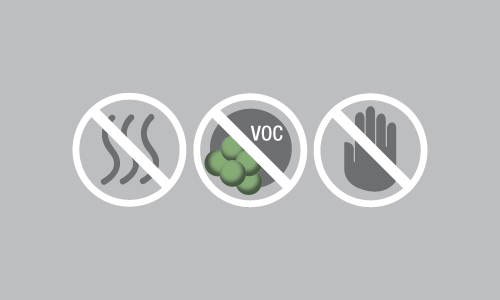In food manufacturing and baking, consistency is key. Retailers and consumers have come to expect a specific product, and any deviation from perfect can result in complaints and lost business. Knowing this, creating a perfect, repeatable product is only one thing on which food manufacturers need to focus. An equal focus needs to be put on reducing emissions and staying within the confines of the regulatory environment and the expectations of the surrounding community.
These focuses need to be considered in relation to one another—the manufacturing process needs to go smoothly without breaking the law, the emission and odor control process can’t result in a product that runs afoul of consumer expectations.
Three Reasons Food Manufacturers Need Reliable, Cost Effective Air Pollution Control Technology
Food manufacturers need to keep on the right side of regulations, just as much if not more than any other manufacturer. Here are three reasons you need to embrace modern, reliable, and cost-effective air pollution control systems in 2018 and beyond.
Regulatory and Legal Environment
Even if it has been nearly 30 years since the passage of the Clean Air Act Amendments of 1990, the enforcement strategies are still evolving, and expectations among regulators are increasing as well. Knowing this, it pays to stay in compliance and to keep everything in order.
Cost (and Risk) of Using Outdated Technology
Many manufacturers do what’s needed to become compliant, often reacting to a new regulation, ordinance, or law. With the Clean Air Act Amendments of 1990 approaching three decades of existence, many pollution control solutions are either approaching the end of their useful life or have already pushed past it. This poses undue risk and cost on organizations using outdated solutions:
- Risk: When equipment gets older, it becomes less effective. Just as an outdated oven becomes less effective and more likely to break down as it ages, an aging air pollution control solution becomes less efficient, less effective, and more likely to experience downtime or outright failure. This could lead to unplanned downtime, or worse, elevated emissions levels that could result in noncompliance.
- Cost: Modern solutions are more efficient and more reliable. In this, an outdated air pollution control system results in more complicated repairs that take place more often, ultimately resulting in higher costs for your company. From catalyst replacement to other ongoing repairs, we are more than happy to help, but recommend that if you need to make multiple calls, that it may be time for a replacement.
Odor Control: Building/Maintaining Your Relationship with the Community
It’s likely that you employ a fair amount of people in your community. However, you still have to be a responsible member of the community. While the smell of freshly baked bread, pizza, or cookies may sound like an appealing prospect to some, living in such an environment every day could become an annoyance. This becomes even worse for the community members who have to live downwind of a meat or cheese smoking facility, fish processing plant, artificial flavoring manufacturer or hot sauce manufacturer.
Being able to control odors is key to being a well-liked employer and a well-respected member of the local community.
Two Common Options for Air Pollution Control and VOC Abatement in Food Manufacturing
While food manufacturers once were able to use afterburners for VOC abatement, their use has proven—while effective—to be inefficient. Today, there are two leading options for food manufacturers looking to reduce VOC emissions, mitigate costs, and even repurpose waste heat for oven heating.
Catalytic Oxidizers
In the emissions control process, think of the oxidizer as a second oven—designed to “cook” emissions such as ethanol out of the exhaust fumes, resulting in two final ingredients: carbon dioxide and water. Unlike the baking process—which rarely exceeds 500 degrees in commercial food manufacturing, oxidizer temperatures are often much higher.
Often the best solution for the food manufacturing industry, Catalytic Oxidizers from The CMM Group are designed to destroy air pollutants and volatile organic compounds in air from process exhaust streams at temperatures ranging from 260°C (500°F) to 345°C (650°F). We have helped many companies in the food manufacturing industry to implement catalytic oxidizers, with two notable case studies:
- Food Company Selects Catalytic Oxidizer to Control 30+ Pounds of Ethanol Emissions at Pizza Production Plant
- Baking Operation Installs Recuperative Catalytic Oxidizer with Energy Recovery System
Learn more about the basics of Catalytic Oxidizers for VOC Abatement here.
Regenerative Thermal Oxidizers
Another, albeit rarer option that exists for food manufacturers is the regenerative thermal oxidizer. Operating at a higher temperature than the catalytic oxidizer, regenerative thermal oxidizers from The CMM Group are designed to destroy air pollutants emitted from process exhaust streams at temperatures ranging from 815°C (1,500 F) to 980°C (1,800 F).
Thermal energy efficiencies (TER) range from 85% to 97%. To maintain low external shell temperatures and minimize radiant heat loss, the combustion chamber is insulated with long-life ceramic fiber modules. The external shell is typically fabricated of carbon steel. Air pollutant destruction efficiencies of 99% can typically be guaranteed.
Learn more about your options as a food manufacturer here, learn about basic design concepts here, and download our entire VOC abatement guide here.




